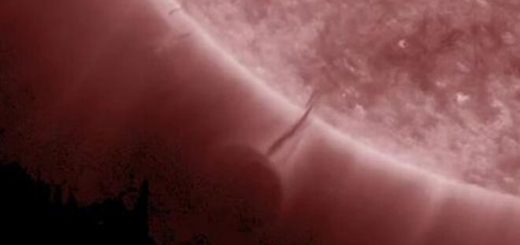The 45th Weather Squadron keeps an eye on the sky ahead of historic SpaceX launch

CAPE CANAVERAL, Fla. — After unfavorable weather conditions scrubbed SpaceX and NASA’s historic launch plans Wednesday, the eyes of space fanatics will return to Cape Canaveral, Fla. Saturday at 3:22 P.M. EDT.
Wednesday’s launch would have been the first time a private company sent astronauts into orbit. It would also have been the first time that astronauts have launched from U.S. soil since the final Space Shuttle mission in 2011.
But Mother Nature had other plans, and astronauts Robert Behnken and Doug Hurley must wait a little longer before beginning their 19-hour journey to the International Space Station.
“We had simply too much electricity in the atmosphere,” NASA Administrator Jim Bridenstine said Wednesday in a video message posted on Twitter.
“There wasn’t really a lightning storm or anything like that, but there was a concern that if we did launch it could actually trigger lightning,” he added.
The decision to scrub Wednesday’s launch was made with 16 minutes and 54 seconds left before liftoff.
SPACE ALLIANCE: ELON MUSK AND PRESIDENT TRUMP SET FOR HISTORIC DEMO-2 LAUNCH
The 45th Weather Squadron, located at Patrick Air Force Base, plays a large role in making decisions like these. A whole room full of military and civilian personnel closely monitors and tracks global weather to assure the conditions are safe enough to launch.
A quiet Friday for the 45th Weather Squadron. But, come Saturday, staffers expect the main operations center to be busy in preparation for the potential launch (Robert Sherman, Fox News).
A quiet Friday for the 45th Weather Squadron. But, come Saturday, staffers expect the main operations center to be busy in preparation for the potential launch (Robert Sherman, Fox News).
“We’re looking at all kinds of information. We’re not just looking at, ‘Is it sunny? Is it cloudy? Is it rainy?'” Major Jeremy Rhomsco told Fox News. “Our big concern is the potential for a triggered lightning strike.”
Rhomsco says lightning does not have to be visible for his team to get concerned, and sometimes the most harmless-looking of clouds carry great danger.
“Even cumulus clouds can have electric fields built up inside them,” said Rhomsco. “You launch a rocket through that, with all kinds of exhaust coming out of the rocket, and the speed of the rocket, you can actually have a discharge — a lightning strike from the cloud to the rocket.”
Major Emily Graves, who works alongside Rhomsco, told Fox News that when it comes to clouds and lightning, there are ten different “weather rules” that must be met in order to launch. While each one has its own unique set of criteria, Wednesday’s attempted launch violated three.
She added that it’s quite possible that rules will be violated again this weekend.
NASA ASTRONAUT ON SCRUBBED LAUNCH: ‘YOU NEVER KNOW WHAT DAY YOU”RE REALLY GOING TO LAUNCH’
“Some of the more common [rule violations] that we are looking at for this weekend are our ‘cumulus cloud rule,’” explained Graves. “That’s kind of a big one this time of year. We’re getting into our unstable season where we’ll see a lot of thunderstorms.”
Equipment used by the 45th Weather Squadron to monitor conditions (Robert Sherman, Fox News).
Equipment used by the 45th Weather Squadron to monitor conditions (Robert Sherman, Fox News).
Graves says that 49 percent of scrubbed launches can be chalked up to weather, and 24 percent of all countdowns are affected by it as well.
Rhomsco points out that while the weather systems surrounding the launch site are of great importance, the weather must also be suitable beyond the Sunshine State.
“All the way along the East Coast,” said Rhomsco, explaining that the Falcon 9 Rocket and Crew Dragon Capsule will travel along this path upon launching. “Anywhere along that ascent corridor up through the Northern Atlantic where the capsule reaches orbital insertion.”
If something should go wrong and the capsule needs to return to Earth prematurely, rescue and recovery areas must be clear as well — which puts much of the globe into play.
CLICK HERE TO GET THE FOX NEWS APP
With so many variables, both Rhomsco and Graves admit that the process can become hectic and even intense in the moments leading up to a launch — in part because decisions can be made with less than a minute to go.
“Sometimes we can go up to 30 seconds until the launch time,” said Graves. “And then, when we’re evaluating for our launch commit criteria when it comes to lightning, we can make that call up to 5 seconds before as to whether we’re gonna be a go or no go.”
As of Friday evening, there is a 50 percent chance of a weather violation for Saturday’s scheduled launch.
Just like Wednesday’s attempt, the general feeling inside the 45th Weather Squadron is that Saturday will come right down to the wire.
“It’s a late afternoon launch. That’s when the storms normally pick up,” said Rhomsco. “So, it will probably be right down to the last minute again.”



 Creators of mankind
Creators of mankind Description of “Tall white aliens”
Description of “Tall white aliens” Where they came from?
Where they came from? About hostile civilizations
About hostile civilizations The war for the Earth
The war for the Earth “Tall white aliens” about eternal life
“Tall white aliens” about eternal life Video: “Nordic aliens”
Video: “Nordic aliens” Aliens
Aliens Alien encounters
Alien encounters The aliens base
The aliens base UFO
UFO Technology UFO
Technology UFO Underground civilization
Underground civilization Ancient alien artifacts
Ancient alien artifacts Military and UFO
Military and UFO Mysteries and hypotheses
Mysteries and hypotheses Scientific facts
Scientific facts


















